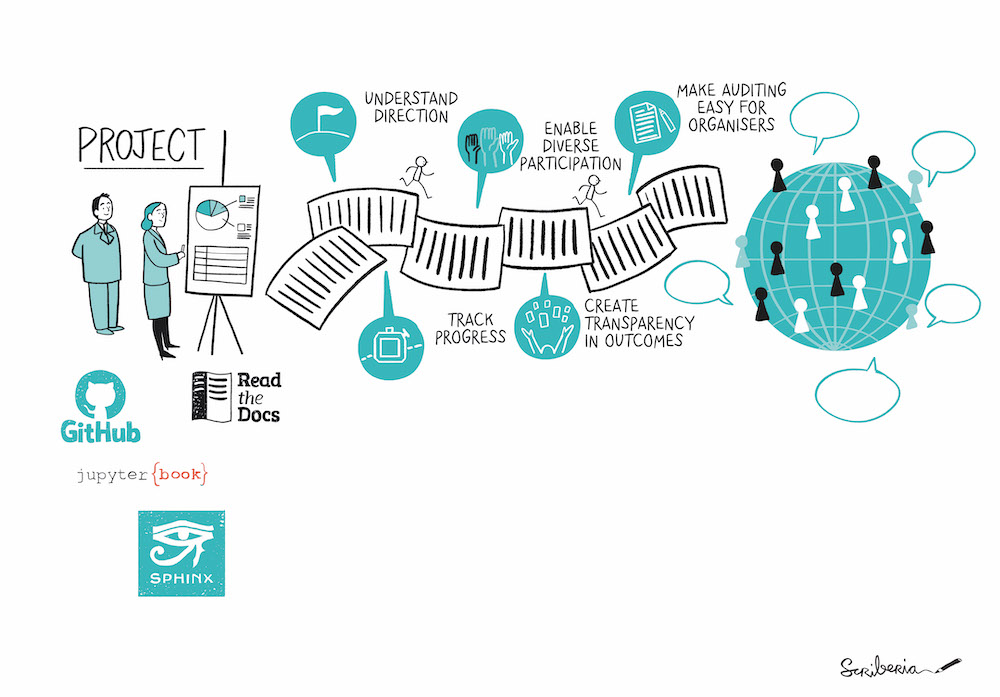 Source: Executable notebooks. The Turing Way Community. This illustration is created by Scriberia with The Turing Way community, used under a CC-BY 4.0 licence. DOI: 10.5281/zenodo.3332807
Source: Executable notebooks. The Turing Way Community. This illustration is created by Scriberia with The Turing Way community, used under a CC-BY 4.0 licence. DOI: 10.5281/zenodo.3332807
Electronic research notebooks
An Electronic research notebook (ERNs) are a way for researchers to remember vital information about their research through an organised and systematic manner. They may be considered part of your research data and will need to be archived along with your other data. If it already in digital form this will be easier to archive over handwritten notes.
ERNs serve a variety of purposes including:
- Documenting key information about your research.
- Enabling sharing throughout your group.
- Ensuring the longevity of your research.
Traditionally lab notebooks have been handwritten but as technology advances there are many advantages to using an ERN over a traditional handwritten notebook.
Typical functionality of most ERNs that handwritten notes can’t do are:
- Allow you to add text, data, images, and equations.
- Built-in search functions.
- Create accounts and permission levels.
- Create stable URLs or persistent identifiers.
Journals and Electronic research notebooks in archaeology
The Journal of Digital History (JDH) is a joint initiative of the Luxembourg Centre for Contemporary and Digital History (C²DH) at the University of Luxembourg and the De Gruyter publishing group.
The Journal of Digital History serves as a forum for critical debate and discussion in the field of digital history by offering an innovative publication platform and promoting a new form of data-driven scholarship and of transmedia storytelling in the historical sciences. As an international peer-reviewed open access journal, the JDH sets new standards in history publishing based on a novel multi-layered approach. Based on code notebooks, articles include:
- a narration layer exploring the possibilities of multimedia storytelling;
- a hermeneutic layer highlighting the methodological implications of using digital tools, data and code;
- a data layer providing access to data and making it reusable (when possible).
The Journal of Digital History makes use of Jupyter notebooks to publish the articles. here you can see an example:
Heřmánková, P., Kaše, V., & Sobotkova, A. (2021). Inscriptions as data: digital epigraphy in macro-historical perspective. Journal of Digital History, 1(1). https://doi.org/10.1515/JDH-2021-1004
Source:
Electronic Laboratory Notebooks (Imperial London Collegue): https://www.imperial.ac.uk/research-and-innovation/support-for-staff/scholarly-communication/research-data-management/organising-and-describing-data/eln/
Last updated: 21/02/2024